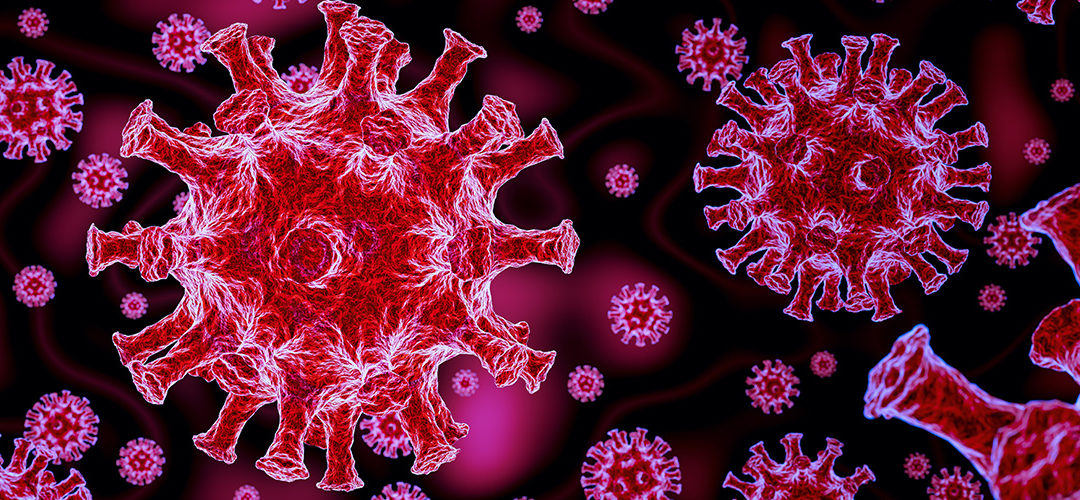A Microbial Weapon of Mass Destruction
I would like to use the analogy of warfare to explain infectious illnesses. Accordingly, let’s consider viruses to be like tiny weapons. I use the term weapon, rather than, say, soldier, because most experts do not consider viruses to be living things. Isn’t that a bit of a shock?
Viruses seem to have no will of their own. And they cannot act or reproduce by themselves, like bacteria, fungi, or parasites can. Instead they are simply tiny shreds of information, like the computer code of a hacker, written in DNA or RNA (as in the case of SARS-CoV-2, the coronavirus that causes COVID-19) and covered with an envelope or capsule made of proteins.
A virus is a set of nefarious instructions enclosed in a package. In the case of SARS-CoV-2 the package is delivered inside a small droplet, which impacts on a person’s mucous membrane in the nose, eye, or airway.
But on is not in. To sicken its host, the invader must gain access into cells, and they are surrounded with a membrane, like tiny locked rooms within the greater fortress of the body. How to penetrate the cells?
Every room has doors, even at the microscopic level. And the coronavirus is able to pick the lock of one in particular, entering the cell through the ACE2 receptor on the cell surface. It is interesting and important that variability between individuals in this ACE2 receptor may account for some of the epidemiology of the COVID pandemic. For example, why do children rarely get COVID? Why is heart disease such a risk factor for severe infection? It turns out that children may have fewer ACE2 receptors expressed on the surface of their airway cells. Similarly, heart failure and hypertension may cause an increase in the expression of these receptors, essentially turning cells into softer targets for viral attack because of the increased opportunity to enter them. There may also be racial determinants in the expression of ACE2 on cells that may eventually help us understand and better treat people of different ethnic groups, and this is a research opportunity.
The structure on the virus that acts as a phony “key” to pick the lock of the ACE2 receptor is the spike protein. Spike proteins are the projections that jut from the virus like the points sticking off of a crown. These give the virus its name, corona, which means “crown.”
(As an aside, you may be interested to learn that some of the most promising vaccine candidates for COVID-19 target this spike protein. In essence the vaccine would remove this key from the virus’ keychain, preventing admittance and keeping the commando-like germs out in the open, where they cannot multiply and can be more easily dispatched by the body.
Once inside, a virus can damage or destroy the cell. And eventually it will…but not just yet. If the coronavirus were simply like a bomb that killed a cell, the attack would soon be over and the damage to the body of the host would be limited.
But coronavirus is not in the cell simply to kill it. It needs the cell. It will use the cell. First, viruses evade the body’s defenses by hiding within cells. Secondly, as I mentioned, unlike other pathogens, viruses cannot replicate themselves; they lack the cellular manufacturing equipment to produce and assemble proteins. But they do not need such machinery in order to multiply.
Hijacked
Instead, the virus, like a commando traveling light behind enemy lines, hijacks a cell’s own manufacturing plant, switching out the normal set of blueprints for making material for the cell and feeding copies of its own instructions (encoded in viral RNA) into the controls of the machinery. In essence viruses commandeer our cellular factories to produce clones of themselves. When the last act of sabotage does occur – when the cell is destroyed – not only does it die, but it launches a wave of new bombs and the cycle repeats, but in logarithmically increasing numbers.
What a sneaky foe – a mindless device that can gain access to human cells and hide out there, while using our own cellular machinery to mass produce more weapons to be unleashed on our organs. How can the human body stack up against such an adversary? I characterized the coronavirus infection as a raging battle, but this description makes it sound like a one-sided conflict. If you recall Peggy and her severe case of COVID-19 (see “UP CLOSE AND PERSONAL WITH COVID-19”), her fight does not seem winnable.
But there is hope – not only in man-made strategies like public health measures, new medications that fight coronavirus, ICU care, and a vaccine that can stop COVID in its tracks. These can be wonderful gifts from our fellow creatures, people who are made in God’s image and have dedicated their lives to improving our health. But we can all be encouraged – and astounded – by something even more fundamental that helps us in the battle with this pandemic.
There is a mighty army at our disposal. In the next post I would like to introduce you to your own, personal military force.
